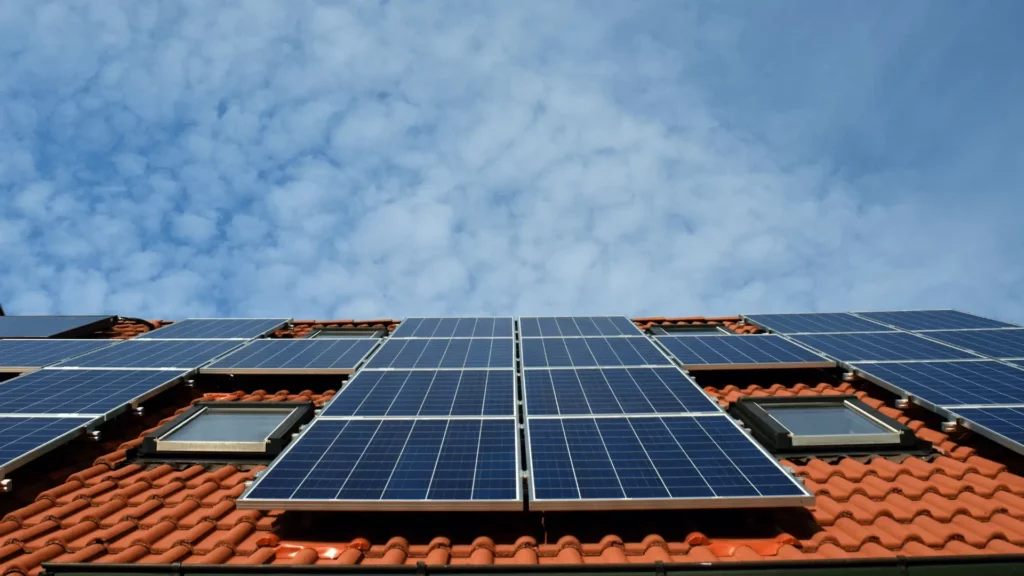Adding Solar Panels to Existing System: Maximizing Your Solar Energy System

Are you looking to maximize your solar energy system and take advantage of the benefits of solar panels? Adding solar panels to an existing setup can be a game-changer, but it’s essential to navigate the process wisely. Before you dive in, let’s explore what you need to know to make informed decisions and ensure you’re getting the most out of your solar system.
In this article, we’ll discuss the key factors to consider when expanding your solar system and adding solar panels. We’ll cover everything from additional electricity requirements to the use of solar batteries, so you can optimize efficiency and reduce dependency on the grid, even during power outages. With expert guidance, you can learn how to make the most of available incentives and navigate the permitting and regulatory aspects.
So, if you’re ready to enhance your energy independence, lower utility bills, and reduce your carbon footprint, keep reading.
Key Considerations Before Expanding Your Solar Panel System
Expanding your existing solar energy system with additional solar panels can be a smart move to maximize your energy production and reduce your dependency on the utility company. However, before you make the decision, there are three crucial factors you should consider:
1. How much additional electricity do you need?
Before adding solar panels to your existing system, it’s essential to determine your additional electricity requirements. Assess your current energy consumption and identify any changes in your electricity needs. Consider factors such as adding new appliances or increasing the usage of existing ones. By understanding your energy needs, you can determine the appropriate number of solar panels to add to your system.
2. How Many Additional Solar Panels Can Your System Accommodate?
The capacity of your existing solar energy system and available roof space will determine the number of additional solar panels you can install. Ensure that your solar inverter can handle the increased size of the system. Consult with a reputable solar installation company to assess the feasibility of expanding your current setup. They will consider factors such as your current usage, available rooftop area, and local regulations to determine the maximum number of solar panels you can add.
3. Solar Battery for Your Energy Setup
Adding a solar battery to your existing system can bring numerous benefits beyond power outage protection. A solar battery allows you to store excess solar energy generated during the day and use it during peak demand periods or at night when your solar panels aren’t producing electricity. This can help you optimize your energy consumption, reduce your utility bill, and potentially qualify for financial incentives like the federal investment tax credit. Talk to a qualified solar expert or a tax professional to understand the financial advantages and regulations related to incorporating a solar battery into your existing setup.
By carefully considering these three factors before adding solar panels to your existing system, you can ensure that your expansion is efficient, cost-effective, and aligned with your energy needs and financial goals.
Remember, before making any decisions regarding your solar system, it’s always best to consult with a professional solar installer and follow the regulations set by your local municipality to ensure a proper installation that complies with safety and permitting requirements.
Also read: Solar Panels for Tiny House Living: Everything You Need to Know
How much additional electricity do you need?
When considering adding solar panels to your existing system, it’s essential to evaluate the amount of additional electricity you require. This assessment is crucial to ensure that your expanded solar system meets your energy needs effectively. Here are a few key points to consider:
1. Analyze your current electricity consumption: Review your past energy bills to understand your average monthly usage. This data will help you estimate how much additional electricity you need to generate through the new solar panels.
2. Anticipate future requirements: Consider any upcoming changes in your household, such as purchasing new appliances or expanding your living space. Factoring in these future needs will ensure you have enough solar capacity to meet your energy demands.
3. Consult with a solar expert: Engaging with a professional solar installer will provide valuable insights into accurate energy calculations based on your specific circumstances. They can assess your current usage and advise on the ideal system size for your additional electricity requirements.
By carefully evaluating how much additional electricity you need, you can make informed decisions about expanding your solar system. This will help you maximize the benefits of solar energy while ensuring sufficient power for your household’s needs.
Also read: How Long Does It Take To Install Solar Panels: A Comprehensive 2023 Guide
How Many Additional Solar Panels Can Your System Accommodate?
Before adding solar panels to your existing system, it’s crucial to assess how many additional panels you can accommodate. This assessment involves considering several factors:
1. Roof space: Evaluate the available roof space to determine if it can accommodate more panels. Consider factors such as shading from trees or nearby objects that may affect the panel placement.
2. System capacity: Assess the capacity of your current solar inverter to handle additional panels. Check if it has spare capacity or if an upgrade is necessary.
3. Electrical infrastructure: Ensure that your electrical infrastructure can support the increased load. Consult a qualified electrician to assess if any upgrades or modifications are required.
4. Local regulations: Familiarize yourself with the local regulations regarding solar panel installations. Some areas may have restrictions on the number of panels or specific requirements for safety and aesthetics.
Remember, consulting with a reputable solar installation company or a qualified solar expert can provide valuable guidance on how many additional panels can be seamlessly integrated into your existing system.
Also read: Can You Put Solar Panels On A Metal Roof?
Exploring the Versatility of a Solar Battery for Your Energy Setup
When considering adding solar panels to your existing system, it’s important to explore the advantages of incorporating a solar battery. While solar batteries do provide protection from power outages, their benefits go beyond that. Here’s why a solar battery can be a valuable addition to your solar energy setup:
1. Power Outage Protection: Solar batteries store excess energy generated by your solar panels, allowing you to power essential appliances and keep the lights on during grid outages. This ensures that you have a reliable backup power source when you need it most.
2. Time-of-Use Billing Optimization: Many utility companies have time-of-use (TOU) billing, where electricity rates vary based on the time of day. With a solar battery, you can store excess energy during low-rate periods and use it during peak-rate periods, effectively lowering your overall utility bills.
3. Maximizing Financial Incentives: By integrating a solar battery into your existing system, you can take advantage of various financial incentives. For example, the Federal Investment Tax Credit (ITC) allows you to claim a percentage of the battery’s cost as a tax credit, further reducing your overall investment.
Adding a solar battery to your existing system not only provides backup power during outages but also offers financial benefits and greater control over your energy usage. Consult with a qualified solar installer or a tax expert to determine the best solution for your specific needs.
Also read: How Hot do Solar Panels Get
Benefits of Adding Solar Panels to Your System
Adding solar panels to an existing system can offer a range of benefits, from increased energy production to reduced utility bills. Here are some key advantages to consider:
1. Increased Energy Production
By adding solar panels to your existing system, you can significantly boost your energy production. This means that you can generate more clean and renewable energy from the sun and rely less on traditional utility sources. With additional solar panels, you’ll have the capacity to generate a greater amount of electricity, especially during peak sunlight hours. This can lead to substantial energy savings over time.
2. Reduced Utility Bills
One of the most attractive benefits of incorporating solar panels into your existing system is the potential for reduced utility bills. As you generate more electricity from the sun, you rely less on electricity provided by your utility company. This can result in lower monthly bills and even the possibility of earning credits for excess energy produced. By leveraging solar power, you can take control of your energy expenses and reduce your reliance on fossil fuel-based electricity.
3. Environmental Sustainability
By expanding your solar energy system, you contribute to a cleaner and greener planet. Solar power is a renewable energy source that produces zero greenhouse gas emissions, unlike traditional energy generation methods. By harnessing the power of the sun, you actively participate in reducing carbon footprints and combating climate change. Adding solar panels to your existing system aligns with the goals of environmental sustainability and can make a positive impact on future generations.
4. Financial Incentives
When you add solar panels to your existing system, you may be eligible for various financial incentives. These incentives can help offset the upfront costs of installation and make solar energy more affordable. For example, federal investment tax credits are available, providing a percentage reduction of your tax liability. Additionally, local utility companies and state programs may offer rebates or incentives for integrating solar power into your home. Exploring these options can make the financial case for adding solar panels even more compelling.
Also read: How to Use Solar Panels During Power Outage
Key Considerations for Integrating Solar Batteries into Your System
Integrating solar batteries into an existing system offers several advantages that can greatly enhance your solar energy setup. Here are some key considerations to keep in mind:
1. Power Outage Protection
One of the major benefits of incorporating solar batteries is their ability to provide power outage protection. During blackouts or emergencies, the stored energy in the batteries can be utilized to keep your essential appliances running. This ensures that you have a reliable source of electricity, even when the grid is down.
2. Time-of-Use Billing Optimization
Many utility companies have time-of-use (TOU) billing, where electricity rates vary depending on the time of day. By integrating solar batteries, you can optimize your energy usage by storing excess solar energy during off-peak times when the rates are lower. This allows you to use the stored energy during peak hours, saving you money on your utility bills.
3. Tax Incentives
Solar batteries may also qualify for various tax incentives, further reducing the cost of incorporating them into your existing system. These incentives can include federal investment tax credits or state-specific programs that promote renewable energy adoption. Consulting with a qualified tax expert can help you navigate these incentives and maximize your savings.
Also read: How Often Should Solar Panels Be Cleaned?
Permitting and Regulatory Requirements
When considering adding solar panels to an existing system, it is essential to understand the permitting and regulatory requirements. Before making any modifications or additions to your solar energy setup, you must ensure compliance with local laws and regulations. Here are some key aspects to consider:
1. Familiarize Yourself with the Permitting Process
Each jurisdiction and utility company may have specific requirements for solar panel installations. Start by researching the permitting process in your area, which typically involves filling out applications, providing system specifications, and paying fees. Consulting with a professional solar installer or contacting your local municipality can help you understand the exact steps involved.
2. Understand Applicable Regulations
Different regions may have specific regulations regarding solar panel installations, including setback requirements, size limitations, and aesthetic guidelines. Familiarize yourself with these regulations to ensure your planned addition complies with local rules. An experienced solar installation company can help you navigate through these requirements.
3. Check Utility Interconnection Guidelines
To connect your solar panel system to the electrical grid, you must comply with utility interconnection guidelines. These rules ensure the safety and functionality of the grid. Review the specific requirements set forth by your local utility company, which may include technical specifications, safety measures, and the completion of necessary paperwork.
4. Consult with a Qualified Expert
To ensure that you adhere to all regulations and permitting requirements, it is advisable to consult with a qualified solar installer or a qualified tax expert with experience in solar energy. They can guide you through the process, ensuring compliance and maximizing the benefits of your solar panel expansion.
Taking the time to understand the permitting and regulatory requirements is crucial when adding solar panels to your existing system. By following the necessary guidelines, you can ensure a smooth and hassle-free installation process while enjoying the benefits of renewable energy.
Also read: How to Repair Solar Panel Rust: A Step-by-Step Guide
Understanding Solar Panel Requirements for Accessory Dwelling Units (ADUs)
When considering adding solar panels to an existing system, it’s essential to understand whether solar panels are required for an Accessory Dwelling Unit, commonly known as an ADU. An ADU is a secondary residential unit located on the same property as a primary residence. It can be an independent structure or a separate living space within the primary residence.
Are Solar Panels Required for an ADU?
The requirement for solar panels on an ADU varies depending on the location and local regulations. Some cities and municipalities have specific mandates that require ADUs to have solar panels installed. These requirements aim to promote renewable energy and reduce carbon emissions. It’s crucial to check with your local jurisdiction or consult a qualified solar installer for guidance on ADU solar panel requirements.
Specific Restrictions and Considerations
When adding solar panels to an ADU, it’s essential to be aware of any specific restrictions or considerations. Some cities may have regulations regarding the size and placement of solar panels on ADUs, as well as aesthetic guidelines that ensure the panels align with the overall architectural style of the property.
Furthermore, the permitting process for ADU solar panel installations may have additional requirements compared to traditional solar installations. It’s recommended to work with a proper solar installation company experienced in handling ADU projects to ensure compliance with local regulations and streamline the process.
Remember: Always check with local authorities or consult a qualified solar installer to gain accurate and up-to-date information about ADU solar panel requirements in your specific location.
Resources:
https://www.seia.org/research-resources/residential-consumer-guide-solar-power





